
Content
Welcome to the Club of Amsterdam Journal.
The Future Now Show about the future of Europe with Humberto Schwab
“With the European elections coming up, the Socratic Design Academy is initiating a video series to contribute to creating a good narrative for Europe.”
Felix B Bopp, Founder & Chairman
Should we engineer the climate? A social scientist and natural scientist discuss
Rob Bellamy, University of Manchester and Matthew Watson, University of Bristol
This is an article from Head to Head, a series in which academics from different disciplines chew over current debates. Let us know what else you’d like covered – all questions welcome. Details of how to contact us are at the end of the article.
Rob Bellamy: 2018 has been a year of unprecedented weather extremes around the world. From the hottest temperatures ever recorded in Japan to the largest wildfire in the history of California, the frequency and intensity of such events have been made much more likely by human-induced climate change. They form part of a longer-term trend – observed in the past and projected into the future – that may soon make nations desperate enough to consider engineering the world’s climate deliberately in order to counteract the risks of climate change.
Indeed, the spectre of climate engineering hung heavily over the recent United Nations climate conference in Katowice, COP24, having featured in several side events as negotiators agreed on how to implement the landmark 2015 Paris Agreement, but left many worried that it does not go far enough.
Matt Watson: Climate engineering – or geoengineering – is the purposeful intervention into the climate system to reduce the worst side effects of climate change. There are two broad types of engineering, greenhouse gas removal (GGR) and solar radiation management (or SRM). GGR focuses on removing anthropogenically emitted gases from the atmosphere, directly reducing the greenhouse effect. SRM, meanwhile, is the label given to a diverse mix of large-scale technology ideas for reflecting sunlight away from the Earth, thereby cooling it.
An engineered future?
RB: It’s increasingly looking like we may have to rely on a combination of such technologies in facing climate change. The authors of the recent IPCC report concluded that it is possible to limit global warming to no more than 1.5°C, but every single one of the pathways they envisaged that are consistent with this goal require the use of greenhouse gas removal, often on a vast scale. While these technologies vary in their levels of maturity, none are ready to be deployed yet – either for technical or social reasons or both.
If efforts to reduce greenhouse gas emissions by transitioning away from fossil fuels fail, or greenhouse gas removal technologies are not researched and deployed quickly enough, faster-acting SRM ideas may be needed to avoid so-called “climate emergencies”.
SRM ideas include installing mirrors in Earth’s orbit, growing crops that have been genetically modified to make them lighter, painting urban areas white, spraying clouds with salt to make them brighter, and paving mirrors over desert areas – all to reflect sunlight away. But by far the best known idea – and that which has, rightly or wrongly, received the most attention by natural and social scientists alike – is injecting reflective particles, such as sulphate aerosols, into the stratosphere, otherwise known as “stratospheric aerosol injection” or SAI.
MW: Despite researching it, I do not feel particularly positive about SRM (very few people do). But our direction of travel is towards a world where climate change will have significant impacts, particularly on those most vulnerable. If you accept the scientific evidence, it’s hard to argue against options that might reduce those impacts, no matter how extreme they appear.
Do you remember the film 127 Hours? It tells the (true) story of a young climber who, pinned under a boulder in the middle of nowhere, eventually ends up amputating his arm, without anaesthetic, with a pen knife. In the end, he had little choice. Circumstances dictate decisions. So if you believe climate change is going to be severe, you have no option but to research the options (I am not advocating deployment) as broadly as possible. Because there may well come a point in the future where it would be immoral not to intervene.
SRM using stratospheric aerosols has many potential issues but does have a comparison in nature – active volcanism – which can partially inform us about the scientific challenges, such as the dynamic response of the stratosphere. Very little research is currently being conducted, due to a challenging funding landscape. What is being done is at small scale (financially), is linked to other, more benign ideas, or is privately funded. This is hardly ideal.
A controversial idea
RB: But SAI is a particularly divisive idea for a reason. For example, as well as threatening to disrupt regional weather patterns, it, and the related idea of brightening clouds at sea, would require regular “top-ups” to maintain cooling effects. Because of this, both methods would suffer from the risk of a “termination effect”: where any cessation of cooling would result in a sudden rise in global temperature in line with the level of greenhouse gases in the atmosphere. If we hadn’t been reducing our greenhouse gas emissions in the background, this could be a very sharp rise indeed.
Such ideas also raise concerns about governance. What if one powerful actor – be it a nation or a wealthy individual – could change the global climate at a whim? And even if there were an international programme, how could meaningful consent be obtained from those who would be affected by the technology? That’s everybody on Earth. What if some nations were harmed by the aerosol injections of others? Attributing liability would be greatly contentious in a world where you can no longer disentangle natural from artificial.
And who could be trusted to deliver such a programme? Your experience with the SPICE (Stratospheric Particle Injection for Climate Engineering) project shows that people are wary of private interests. There, it was concerns about a patent application that in part led to the scientists calling off a test of delivery hardware for SAI that would have seen the injection of water 1km above the ground via a pipe and tethered balloon.
MW: The technological risks, while vitally important, are not insurmountable. While non-trivial, there are existing technologies that could deliver material to the stratosphere.
Most researchers agree that the socio-political risks, such as you outline, outweigh the technological risks. One researcher remarked at a Royal Society meeting, in 2010: “We know that governments have failed to combat climate change, what are the chances of them safely implementing a less-optimal solution?”. This is a hard question to answer well. But in my experience, opponents to research never consider the risk of not researching these ideas.
The SPICE project is an example where scientists and engineers took the decision to call off part of an experiment. Despite what was reported, we did this of our own volition. It annoyed me greatly when others, including those who purported to provide oversight, claimed victory for the experiment not going ahead. This belies the amount of soul searching we undertook. I’m proud of the decisions we made, essentially unsupported, and in most people’s eyes it has added to scientists’ credibility.
Moral hazard
RB: Some people are also worried that the promise of large-scale climate engineering technologies might delay or distract us from reducing greenhouse gas emissions – a “moral hazard”. But this remains to be seen. There are good reasons to think that the promise (or threat) of SRM might even galvanise efforts to reduce greenhouse gas emissions.
MW: Yes, I think it’s at least as likely that the threat of SAI would prompt “positive” behaviour, towards a sustainable, greener future, than a “negative” behaviour pattern where we assume technology, currently imaginary, will solve our problems (in fact our grandchildren’s problems, in 50 years time).
RB: That said, the risks of a moral hazard may not be the same for all climate engineering ideas, or even all SRM ideas. It’s a shame that the specific idea of stratospheric aerosol injection is so frequently conflated with its parent category of SRM and climate engineering more generally. This leads people to tar all climate engineering ideas with the same brush, which is to the detriment of many other ideas that have so far raised relatively fewer societal concerns, such as more reflective settlements or grasslands on the SRM side of things, or virtually the entire category of greenhouse gas removal ideas. So we risk throwing the baby out with the bathwater.
MW: I agree with this – somewhat. It’s certainly true all techniques should be given the same amount of scrutiny based on evidence. Some techniques, however, often look benign but aren’t. Modifying crops to make them more reflective, brightening clouds, even planting trees all have potentially profound impacts at scale. I disagree a little in as much as we simply don’t know enough yet to say which technologies have the potential to reduce the impacts of climate change safely. This means we do need to be thinking about all of these ideas, but objectively.
Anyone that passionately backs a particular technology concerns me. If it could be conclusively proven that SAI did more harm than good, then we should stop researching it. All serious researchers in SAI would accept that outcome, and many are actively looking for showstoppers.
RB: I agree. But at present there is very little demand for research into SRM from governments and wider society. This needs to be addressed. And we need broad societal involvement in defining the tools – and terms – of such research, and indeed in tackling climate change more broadly.
The question of governance
MW: Some people think that we should just be getting on with engineering the climate, whereas others feel even the idea of it should not even be discussed or researched. Most academics value governance, as a mechanism that allows freedom to explore ideas safely and there are very few serious researchers, if any, who push back against this.
A challenge, of course, is who governs the governors. There are strong feelings on both sides – scientists either must, or cannot, govern their own research, depending on your viewpoint. Personally, I’d like to see a broad, international body set up with the power to govern climate engineering research, especially when conducting outdoor experiments. And I think the hurdles to conducting these experiments should consider both the environmental and social impact, but should not be an impediment to safe, thoughtful research.
RB: There are more proposed frameworks for governance than you can shake a stick at. But there are two major problems with them. The first is that most of those frameworks treat all SRM ideas as though they were stratospheric aerosol injection, and call for international regulation. That might be fine for those technologies with risks that cross national boundaries, but for ideas like reflective settlements and grasslands, such heavy handed governance might not make sense. Such governance is also at odds with the bottom-up architecture of the Paris Agreement, which states that countries will make nationally determined efforts to tackle climate change.
Which leads us to the second problem: these frameworks have almost exclusively arisen from a very narrow set of viewpoints – either those of natural or social scientists. What we really need now is broad societal participation in defining what governance itself should look like.
MW: Yes. There are so many questions that need to be addressed. Who pays for delivery and development and, critically, any consequences? How is the global south enfranchised – they are least responsible, most vulnerable and, given current geopolitical frameworks, unlikely to have a strong say. What does climate engineering mean for our relationship with nature: will anything ever be “natural” again (whatever that is)?
All these questions must be considered against the situation where we continue to emit CO2 and extant risks from climate change increase. That climate engineering is sub-optimal to a pristine, sustainably managed planet is hard to argue against. But we don’t live in such a world. And when considered against a +3°C world, I’d suggest the opposite is highly likely to be true.
This article is republished from The Conversation under a Creative Commons license.
In Conversation with the Mystic – Jonathan Coslet with Sadhguru | Capitalism and Spirituality

Jaggi Vasudev, Sadhguru and Founder, Isha Foundation, India, captured in the snow at the Annual Meeting 2007 of the World Economic Forum in Davos, Switzerland.
Can a capitalist and a yogi find common ground? Sadhguru and Jonathan Coslet, CIO of TPG Holdings, discuss intelligence, the future of the market economy, leadership and finding one’s purpose.
Yogi, mystic and visionary, Sadhguru is a spiritual master with a difference. An arresting blend of profundity and pragmatism, his life and work serves as a reminder that yoga is a contemporary science, vitally relevant to our times.
The Future Now Show
Shape the future now, where near-future impact counts and visions and strategies for preferred futures start. – Club of Amsterdam
Do we rise above global challenges? Or do we succumb to them? The Future Now Show explores how we can shape our future now – where near-future impact counts. We showcase strategies and solutions that create futures that work.
Every month we roam through current events, discoveries, and challenges – sparking discussion about the connection between today and the futures we’re making – and what we need, from strategy to vision – to make the best ones.
March 2019
the future of Europe
with
Humberto Schwab
moderated by
Marleen Stikker
With the European elections coming up, the Socratic Design Academy is initiating a video series to contribute to creating a good narrative for Europe.
The Future Now Show
Credits
Humberto Schwab, Socratic Design Academy
socraticdesignacademy.com
Marleen Stikker, founder, Waag
waag.org
Bruce Schneier – a “security guru”
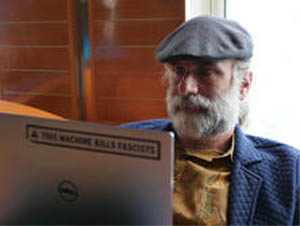
Bruce Schneier: “I am a public-interest technologist, working at the intersection of security, technology, and people. I’ve been writing about security issues on my blog since 2004, and in my monthly newsletter since 1998. I’m a Special Advisor to IBM Security, a fellow and lecturer at Harvard’s Kennedy School, and a board member of EFF -.Electronic Frontier Foundation,”
News about the Future

The worldwide demand for Battery / Accu systems all using Li-ion technology or technology based on the same resources, we foresee issues to mine for these resources. We move from oil and gas to lithium mining. These systems are not completely circular and sustainable. Therefore we developed the Bio Based Battery and the CO2 2Energy system for stationary applications.
Energy Buffering
The rapidly increasing amount of solar panels, wind turbines and other form off sustainable electricity generation is increasing. The current electricity infrastructure is not capable of handling all these different inputs on various times. The electricity networks are stressed to the limits and some times over the limit with black outs as a result.
Local electricity buffering and storage is needed to level out fluctuations on the network. But also there is a huge demand for local electricity storage at houses, factories, sportclubs, etc.
Everywhere where local electricity is generated local electricity storage is useful.
It is now the time to make the next step for the energy buffering and the circular economy without abusing the earth.
The revolutionary SuWoTec Non Corrosive Electrodes play a vital role in the Efficient Energy Buffering Proces. That’s why we are developing the Bio Based Battery.

Predicting cancer
Scientists have used artificial intelligence to predict how cancers will progress and evolve – so that doctors can design the most effective treatment for each patientThey developed a new technique called REVOLVER (Repeated evolution of cancer), which picks out patterns in DNA mutation within cancers and uses the information to forecast future genetic changes. The ever-changing nature of tumours is one of the biggest challenges in treating cancer – with cancers often evolving to a drug-resistant form.
But a team led by scientists at The Institute of Cancer Research, London, and the University of Edinburgh were able to use their analysis of genetic changes to predict cancer’s next move – allowing doctors to stay one step ahead.
Bionic limbs
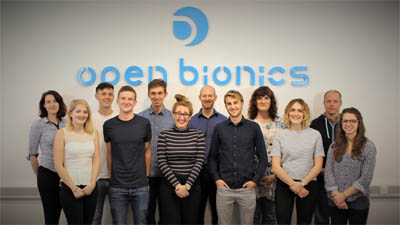
Open Bionics is a Private, Limited UK company.
Open Bionics are 3D printing super awesome low-cost robotic prosthetics that are open source.
Turning disabilities into superpowers
We’re a bionics company developing affordable, assistive devices that enhance the human body. We’ve started by introducing the Hero Arm, a stylish multi-grip bionic hand. Current upper limb prostheses exist as hooks, grippers, or expensive bionic hands. We’re on a mission to make beautiful bionic limbs more accessible.
Hero Arm is the world’s first medically certified 3D-printed bionic arm.



Recommended Book

The Hindu Kush Himalaya Assessment
Editors: Wester, P., Mishra, A., Mukherji, A., Shrestha, A.B. (Eds.)
Constitutes the first comprehensive assessment of the Hindu Kush Himalaya region, providing an authoritative overview of the region.
Assembles the collective knowledge of over 300 leading researchers, practitioners, experts, and policymakers
Combines the current state of knowledge of the Hindu Kush Himalaya region in one volume.
Offers Open Access to a set of evidence-based and actionable policy solutions and recommendations and nine mountain priorities consistent with the Sustainable Development Goals
Getting entrepreneurial spirit into our schools
The most important places for learning – including learning about business – are our schools. They are educating tomorrow’s entrepreneurs. The Federal Ministry for Economic Affairs and Energy therefore encourages schools to create space and attention for business themes in classroom teaching. The aim is to lead school students towards business life as early as possible. The website “Entrepreneurial Spirit in Schools” wishes to provide examples and encourage people to venture into business.
It is still rare to find business studies taught at German schools. But it is important for school students to learn how to think and act like an entrepreneur, no matter whether they go into business or not in later life.
To help teachers integrate business theory and practice into their classes in a stimulating way, the website offers information on projects and contact points, materials, and online training courses. Also, the Economic Affairs Ministry has developed practical teaching aids. The information and materials provide ideas for classroom teaching and entrepreneurship projects. For example, the website sets up contacts with business people, e.g. in business plan games like business@school or school bankers. Another practical classroom project could be to have school students set up companies and develop business ideas.
Information, games and projects for school students
School students themselves can use the “Entrepreneurial Spirit in Schools” platform to work on business topics. The site has a dedicated section for young people. It offers specially prepared information as well as, for example, the online entrepreneurship game “Be Boss” and business projects for school students to help them approach business topics in an entertaining way. A special highlight here is the Schüler-Business-Award, in which prizes go to the best business projects by school students in Germany, Austria, Luxembourg, Liechtenstein and Switzerland.
The group of initiatives
A large number of initiatives have been brought together under the umbrella of the Economic Affairs Ministry. The group of initiatives entitled “Entrepreneurial Spirit in Schools” consists of a number of projects and initiatives:
JUNIOR, business@school an initiative of The Boston Consulting Group, Jugend gründet, Deutscher Gründerpreis für Schüler, Schul/Banker, TheoPrax, Deutsche Kinder- und Jugendstiftung (Fachnetzwerk Schülerfirmen der DKJS, Lab2Venture), NEBS, Ifex, Ideen machen Schule, Achievers International, NFTE, Bildungswerk der Bayerischen Wirtschaft e. V., Wissensfabrik, cooperatives of school students.
The members of this group of initiatives aim to strengthen the culture of entrepreneurship in Germany and safeguard it for the future. To this end, they foster and develop entrepreneurial thinking and acting. Young people are particularly receptive to new ideas, and want to make their ideas happen. “Entrepreneurial Spirit in Schools” provides a platform for this.
The initiatives help teachers by
organising and managing competitions between school students, companies set up by school students and other business-related projects,
setting up contacts with the business community,
providing extra classroom materials,
organising talks and excursions.
The school students are encouraged
to be bold and creative, to learn about their own interests and abilities,
to develop and build social skills,
to assume responsibility in companies of school students,
to discover how business works in an exciting way,
to try out their own business ideas.
The “Entrepreneurial Spirit in Schools” initiative does not aim to make as many school students as possible feel that they ought to set up their own company in later life. Rather, the aim is to foster creativity, responsibility and social skills. Learning by doing.
How drones will change cities
Elevation is a short documentary by online magazine Dezeen about how drones will transform cities – revolutionising how people travel, how goods are delivered and how buildings look and are constructed. “Aerial highways” will relieve pressure on roads as deliveries and human transportation take to the skies in unmanned electric vehicles. Architecture will change dramatically as the ground floor entrance is replaced by rooftop landing, parking and recharging zones and deliveries arrive via specially constructed portals on the sides of buildings. This vision of the future is set out in the 18-minute film, which features interviews with architects and industry experts including Norman Foster, Paul Priestman, Liam Young and Anab Jain. Yet as well as painting a picture of a utopian drone-filled future, Elevation also hints at more sinister uses of the technology, exploring potential threats to our privacy and safety.
Elevation documentary: how drones will change cities
Futurist Portrait: Madeline Ashby
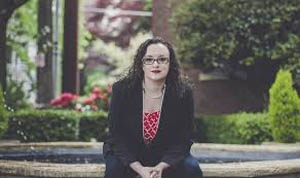
Madeline Ashby is a futurist and science fiction writer based in Toronto, Canada. Alongside supporting Changeist projects. She has worked with organizations like the Institute for the Future, SciFutures, Nesta, Data & Society, the Atlantic Council, Strategic Innovation Lab, and others. She has conducted workshops with groups like Engineers Without Borders Canada, United Way Canada, and the Ontario Media Development Corporation.
She also lectures on science fiction and design thinking at OCAD University in Toronto, where she graduated with a Masters of Design from the Strategic Foresight & Innovation programme, and in creativity and collaboration at Ryerson University. Madeline is also a guest lecturer in the Designing the Future programme at the Dubai Future Academy.
She is also the author of the Machine Dynasty series, and the novel Company Town from Tor Books, which was runner up for the Canada Reads prize in 2017. Her fiction has been translated into Japanese and German. Her essays have appeared at BoingBoing, io9, WorldChanging, Creators Project, Arcfinity, MISC Magazine, and FutureNow. Her fiction has appeared in Slate, MIT Tech Review, and elsewhere. She is the author of the Machine Dynasty novels. Her novel Company Town was a Canada Reads finalist.
You can buy her books here.
Much of what I do is develop what Brian David Johnson at Intel calls “science fiction prototypes.” Often, someone gets in touch with me because they want to talk in a creative but structured way about the future of a given area. It might be intelligent systems, or smart cities, or immigration, or a world without antibiotics. (I’ve written stories about all of those, for my clients.)The end goal might be a story that accompanies an internal communication, or an immersive way to pitch a new idea, or a story that can create a conversation at a workshop or other event. Sometimes I’m asked to write something optimistic. Sometimes I’m asked to describe the worst possible outcome. Sometimes people love my stories. Other times, they leave the room in disgust. (This actually happened, once. It’s my proudest moment.) Either way, I usually meet great people, and I go cool places, and I see technologies in development long before they hit the mainstream. I do this in between writing science fiction novels.
Strategic Foresight | Madeline Ashby



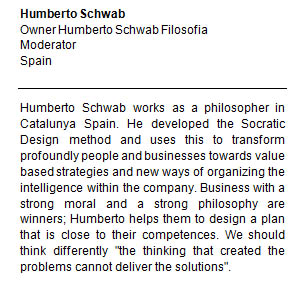
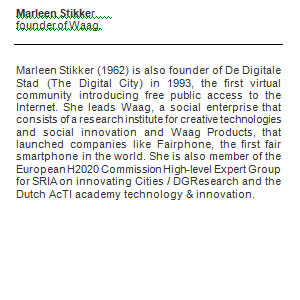



Customer Reviews
Thanks for submitting your comment!